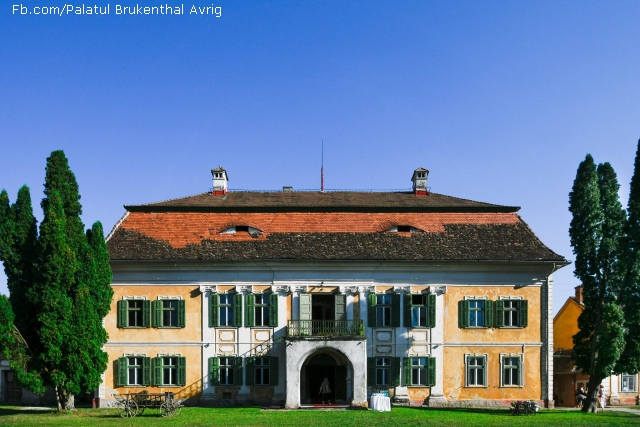The Brukenthal palace and gardens in Avrig
The late 18th c. summer residence of baron Samuel von Brukenthal, the Habsburg governor of Transylvania, is open to visitors.

Christine Leșcu, 13.10.2019, 14:00
Baron Samuel von Brukenthal, Habsburg
governor of Transylvania, lawyer and art collector, lived between 1721 and 1803
and is today known mostly as the owner of the building in Sibiu, central Romania,
that houses the first public museum in south-eastern Europe and one of the
earliest on the continent. In fact, his extensive collection formed the core of
what is today known as the Brukenthal Palace museum.
But there exists another Brukenthal
palace, lesser-known but just as significant from an historical and
architectural point of view, namely the baron’s summer residence in Avrig.
Located 26 km from Sibiu, Avrig lies at the foot of the Fagaras Mountains, in
the Olt River valley. The home town of Gheorghe Lazar, the founder of modern
education in Romania, Avrig was the choice of baron von Brukenthal for building
a summer residence consisting in a big and comfortable manor house and gardens
so beautiful that they were often referred to as the Transylvanian Eden and
the fountain of health.
Corina Combei, an event manager at
the Brukenthal Palace in Avrig, tells us more about the history of the place
where the baron and his family used to spend their summers:
Building works on the palace began
around 1783, but it took a while to finish the construction of the residence
and the gardens. The entire grounds cover 15.5 hectares. The layout reflected
the baron’s exact wishes. The residence consists of three parts, namely the
main building, which stands out for its architecture, and two wings on one
level. The palace affords a wide panoramic view of the gardens and the river
plain in the distance, and the gardens appear to be stretching for miles and
miles, an optical illusion which was very much in tune with the late Baroque
style. A majestic staircase on different levels, a fountain, various structures
and ornaments placed geometrically and the alleys all lead to the gardens,
which are located 12 metres lower than the palace. To the east of the palace,
on sloping ground, we find the English garden, which is smaller than the French
garden and is crossed by winding paths, with little nooks where you could catch
your breath and which were signalled at the time by small decorative objects. A
Dutch garden was initially located in front of the orangerie, where all kinds
of fruits and vegetables were grown, as well as exotic plants. It is a well-known
fact that the baron was the first to bring pineapples, lemons, coffee and
nutmeg to Transylvania. Another peculiar thing about the grounds is that they
also contain an animal farm. The baron had both an orchard and a vegetable
garden and was also breeding animals, his intention being to make the entire
estate independent economically.
The palace in Avrig has undergone
various alterations in time. Its interior architecture saw the biggest changes
as the palace was transformed into a sanatorium. Its exterior, however, has
remained unchanged since the time of baron Samuel von Brukenthal, including the
orangerie, where we can still find today decorative elements dating from the
time of the baron, Corina Combei explains:
The baroque style has been
preserved since 1908 as much as possible. In effect, there have been no
alterations to its architectural style. But some changes have been made over
time. During the communist period, the palace was turned into a sanatorium and
a maternity hospital, so the rooms were adapted to meet the new functions.
After 1990, however, the whole estate went back to its initial concept, that of
a historical building. We preserve the style of late Baroque, including in the
case of the gardens, and try to keep alive the memory of the place as much as
possible and the spirit in which it was built by baron von Brukenthal.
After being nationalised when the
communist party came to power in Romania after WWII, the estate in Avrig was
returned to private hands post-1990, and has since been managed by the Samuel
von Brukenthal Foundation, on behalf of the Evangelical Church Council in
Avrig. Currently in urgent need of restoration, the Brukenthal estate in Avrig
could well become a centre for the arts and culture and for landscape art.





























